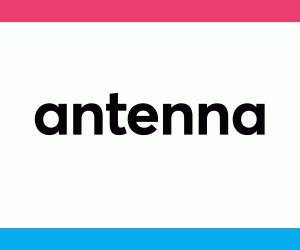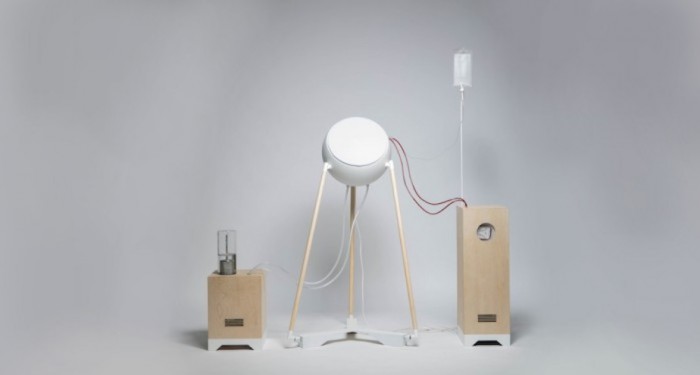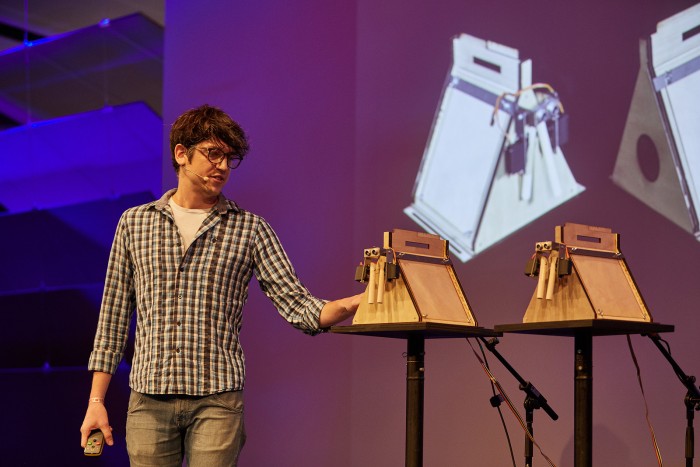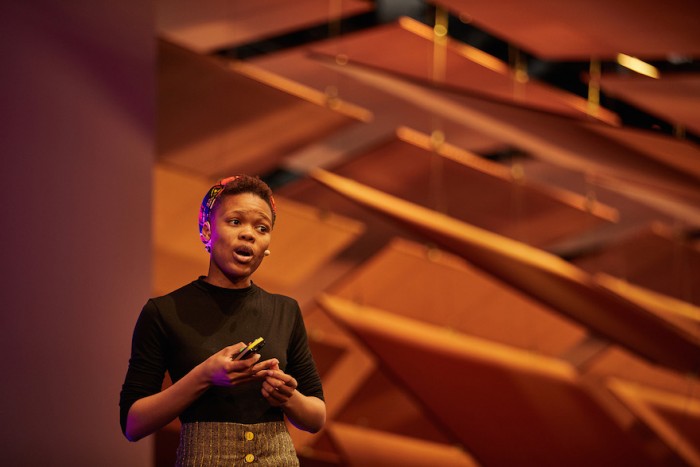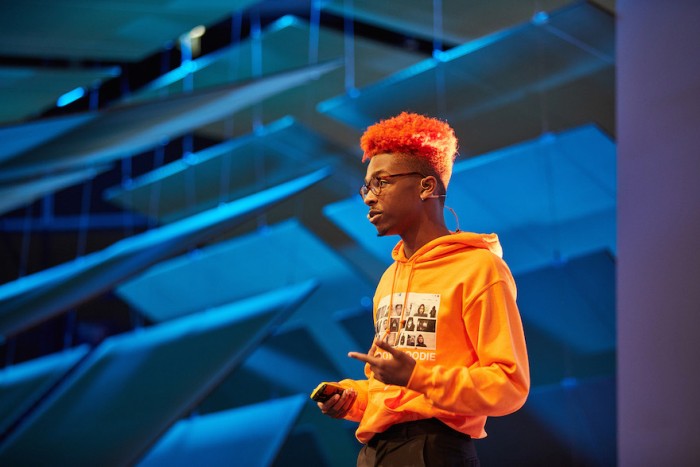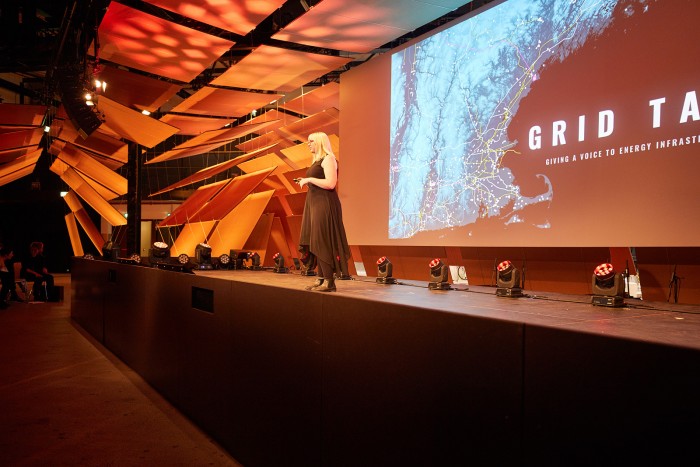Part of the Project
When the Design Indaba and Dutch Design Foundation team set out to launch Antenna, we were not prepared for what we found.
How could one be? Design is evolving even as I type these words. People are not only designing products but also redesigning the economy, voting systems and the way we relate to what we perceive as natural.
No-one made this latter point clear on the Antenna stage more than Billie Rehwald with her project, Ectogenesis.
The name gives it away a bit, but Ectogenesis is a way for one to have a womb outside one’s body where one can raise a health baby.
Billie spoke about how her project aims to explore human-made gender disparities and biological differences of the sexes, while also using design as a tool to overcome both artificial and biological borders.
Lea Pereyre, on the other hand, may have invented a completely new design category.
She is a drone costume designer who works closely with an engineer to create an algorithm that helps a group of drones fly around any room.
Her work is at the intersection of physics and aesthetics, and if you’re looking to see how these drones play out then look no further than Metallica’s current tour where the band has Pereyre drones as part of their stage act.
And while still on the topic of music, Nikolas Kisic Aguirre looked at the power of sound by creating a Modular Rhythm Machine. He says that he is especially inspired by the use of sound in rituals like marching, drumming and rhythm.
The machine is controlled by an algorithm and can be assembled to as many as one needs. The audience was treated to a special performance which he created especially for the event.
Thandiwe Msebenzi used the sound of men catcalling her on the streets of Cape Town as a weapon in her presentation.
Through her project Awundibone, she uses as series of photographs to explore the idea of rape culture and how women are seen, but also rendered invisible in the public spaces that they occupy.
She revealed that the next leg of her project is to do a VR public installation where members of the public will not only get to see the work but also experience it.
Myles Loftin, the youngest Antenna participant at only 19 but the brightest in an orange, Trayvon Martin hoodie, explored visibility of a different kind.
With Hooded, Myles used photography to explore how young black men in America are misrepresented in the media as being violent while the opposite is true of their white counterparts. His ultimate goal is to change this perception and work with stock photography websites to have a more inclusive portrayal of black men not only on the internet but also in popular culture.
Caroline Smeenk’s lens into visibility was a project called Maternal Home Care. The project looked at how to make the healthcare system accessible to rural women who often have to travel far to reach hospitals, especially during childbirth.
She designed a series of products, through research, that help to make the process of doing the different tests at home less intrusive.
But ultimately our sources of energy as well as the future of housing, especially in times of gentrification, are a worldwide concern.
Through her project Grid Talk Kelsey Wakefield looked at ways of humanising the electric grid system as a way of getting people to understand energy consumption but also where that energy comes from.
She asked the simple question: how many doughnuts does your house eat? A simple question with surprising answers if you consider how reliant we are on electricity.
To help make the concept more real to audience members she created a special version of her project that traced the source of energy in Eindhoven that the audience got to keep and take home.
For young architect Iwo Borkowicz the looming housing crisis in Havana was a concern. Tourism is booming but some residents are struggling with the upkeep of their homes.
He saw a way of linking the two problems and finding a solution that works for both tourists and residents in a project called A Symbiotic Relation of Cooperative Social Housing and Dispersed Tourism in Havana Veija.
For Iwo the solution lies in using architecture as a way of upgrading the homes of local residents as a way of attracting tourists to lease part of these homes, then using money from the tourists to help with upkeep of the homes.
The images of Havana swirling in people’s minds probably include cadillacs, people smoking cigars and drinking rum. This is probably only one aspect of life in Cuba but a powerful demonstration of the power of images and image making.
Lucy Liu is a designer and co-founder of a weekly newspaper on image making called Props.
Every week they explore a different aspect of image making through speaking to photographers, designers, architects about their work and processes behind it.
For Antenna, Lucy worked with prolific Dutch Designer Winy Maas and the Why Factory to create a special edition of Props that the audience got to keep.

